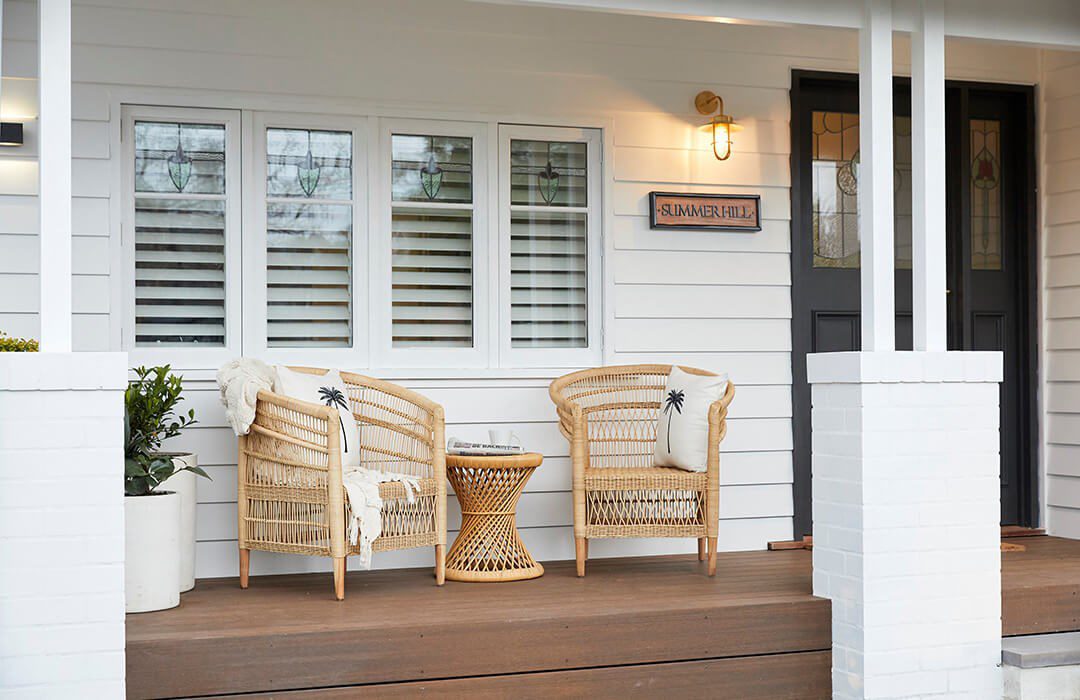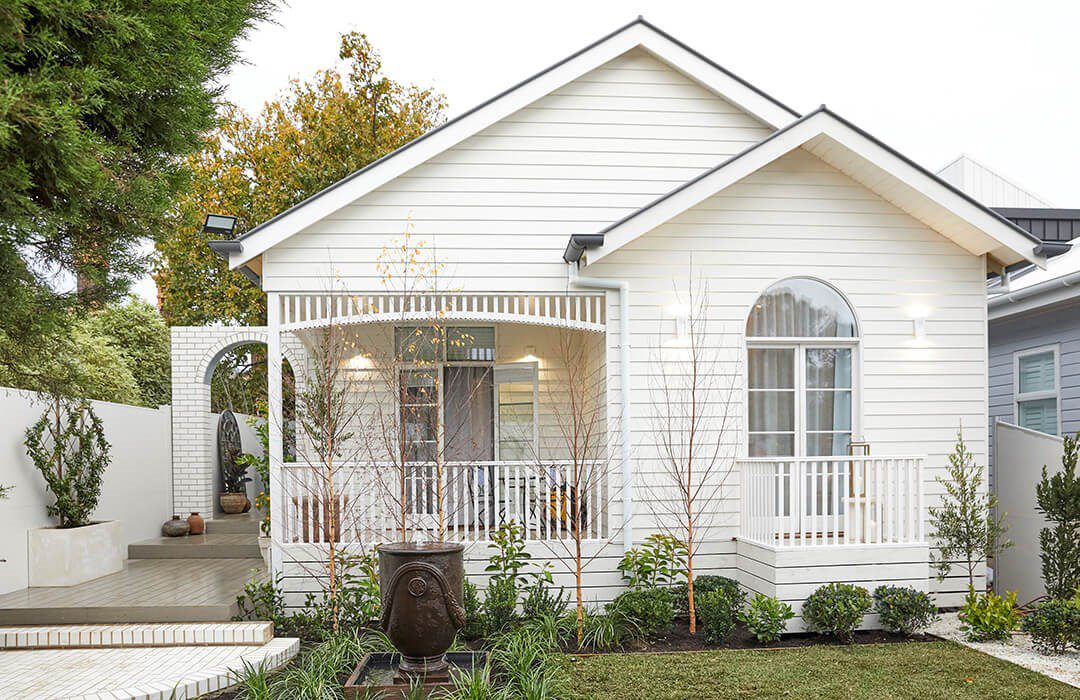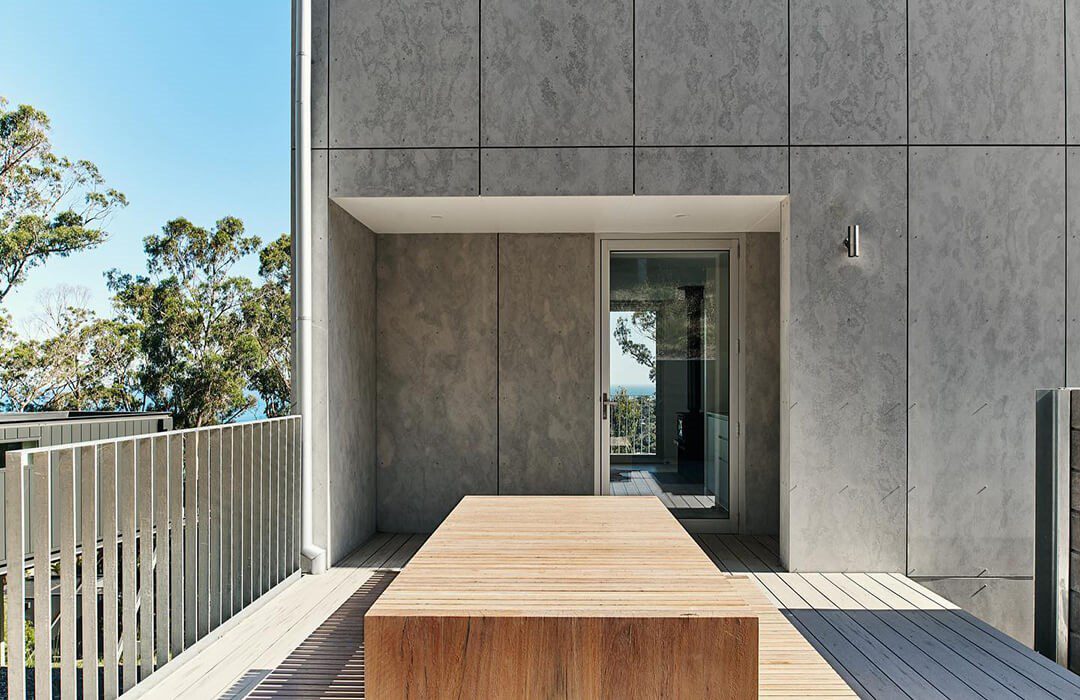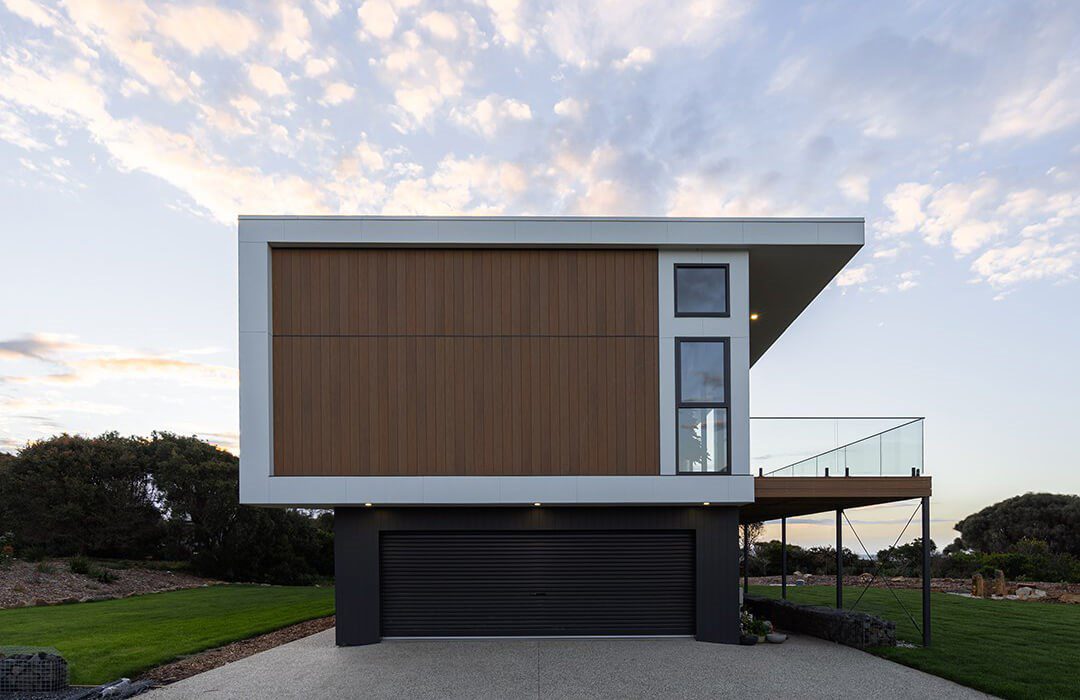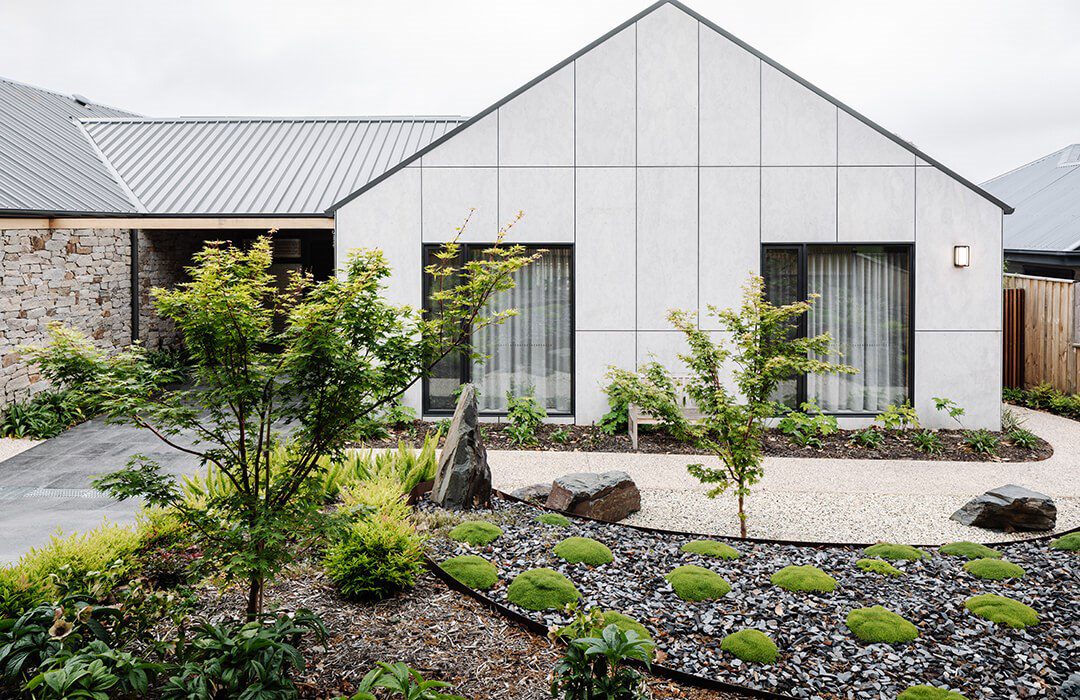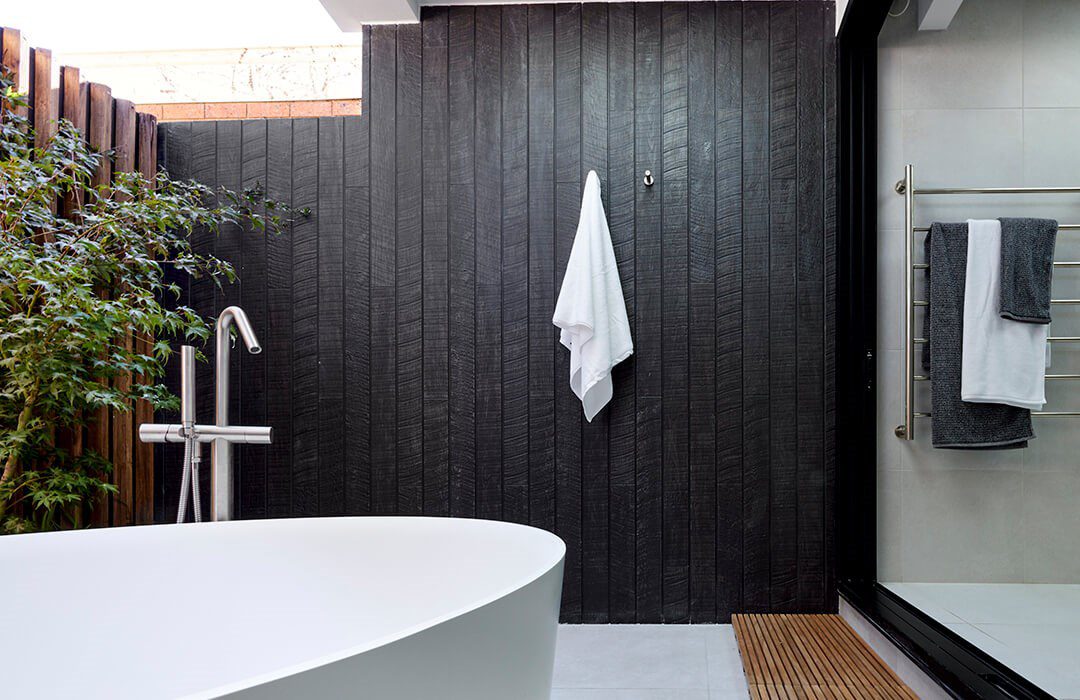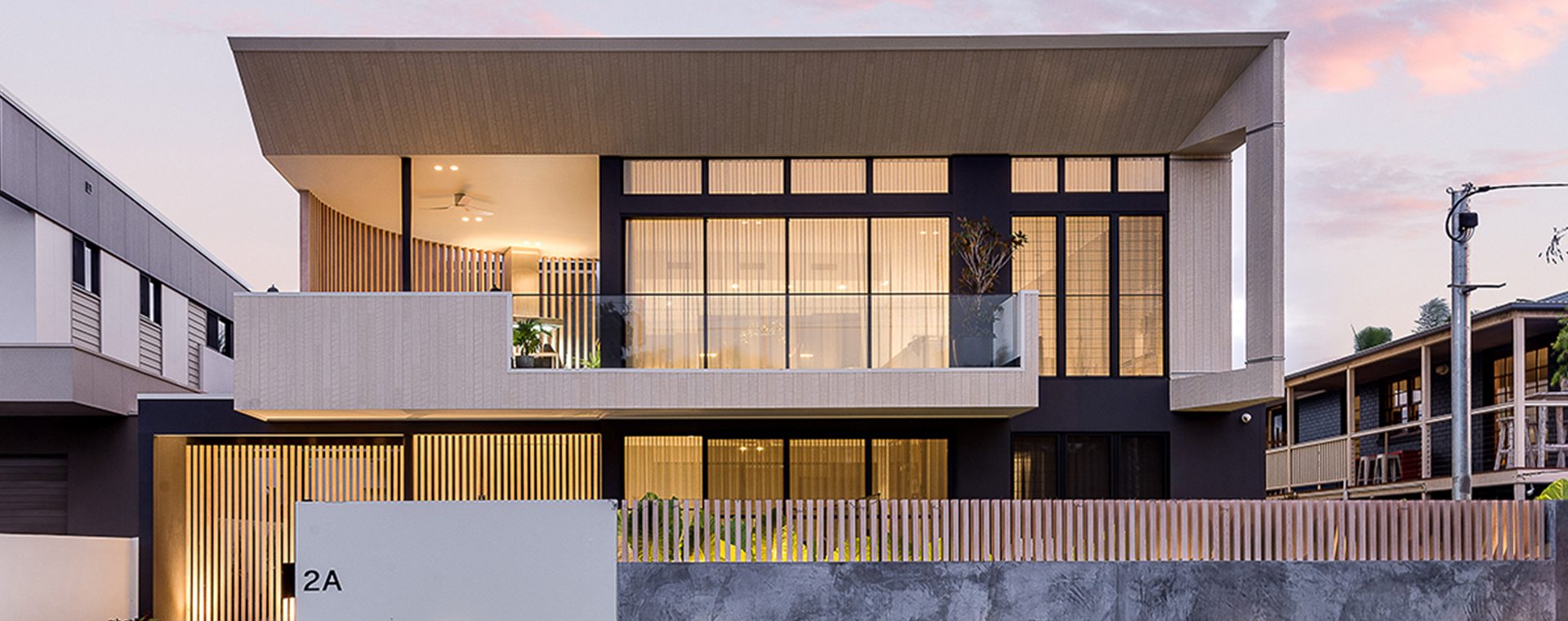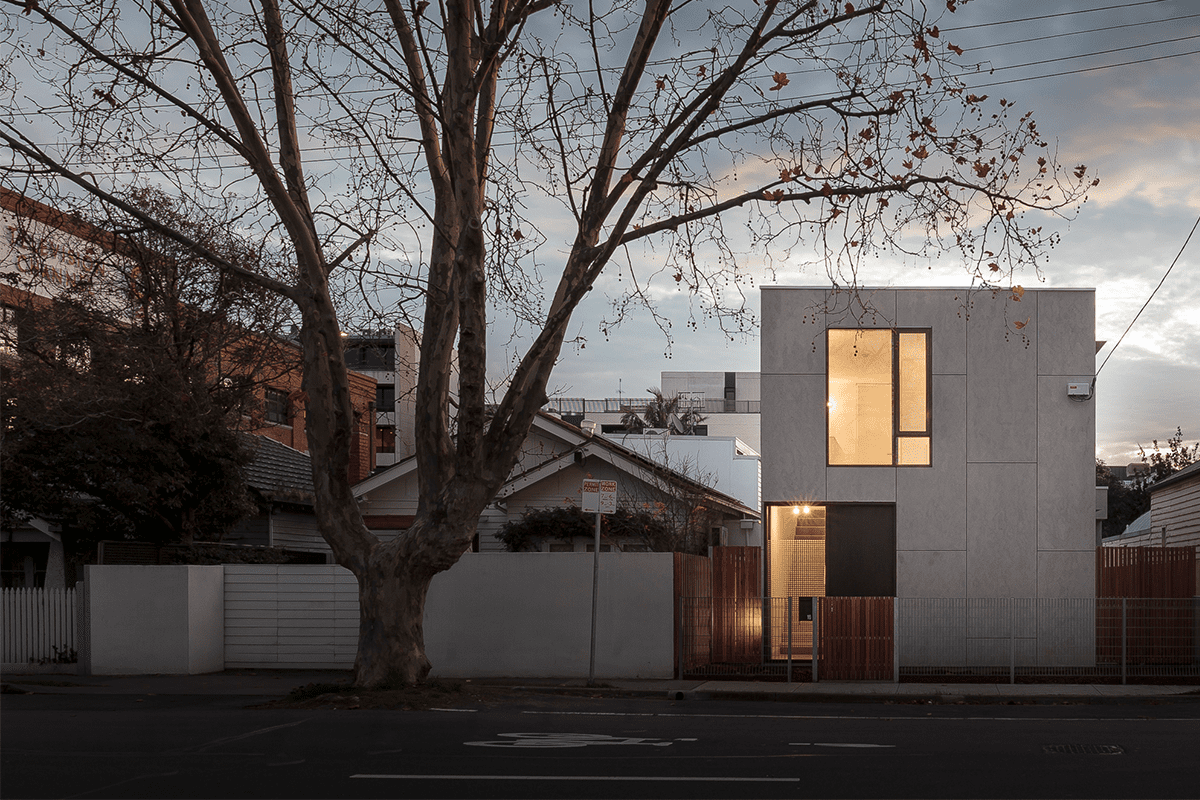The Cemintel Weatherboard collection, for example, is the go-to cladding for coastal and Hamptons-style facades. The pre-primed panels offer the timeless look and feel of classic timber weatherboards and are available in a range of profiles. Cemintel Weatherboards can be painted in practically any colour to reflect your unique style.
Or, if you prefer the look of raw concrete, Cemintel Barestone is the ideal choice. Available in four stunning colourways – Original, Ash, Lunar and Graphite – Barestone is admired for its natural hues and smooth, mottled finish. Used externally or internally, Barestone blends seamlessly with the surrounding environment and is perfect way to lean into industrial and biophilic design trends.
Often, a combination of different cladding options is the best way to create a unique and personalised look. For their innovative display home, the Mosman, Albury-Wodonga builder Gilchrist Homes used Barestone Original and Territory Woodlands to bring the façade to life. The result was a dynamic, layered look with a high-end feel.
“We are always looking for new products to work with that offer a point of difference to our customers,” says Matthew Gilchrist, Director of Gilchrist Homes. “Cemintel offers the opportunity to approach each home individually and bring together different design elements to create something truly special.”
To explore Cemintel’s range of fibre cement cladding, click here.
